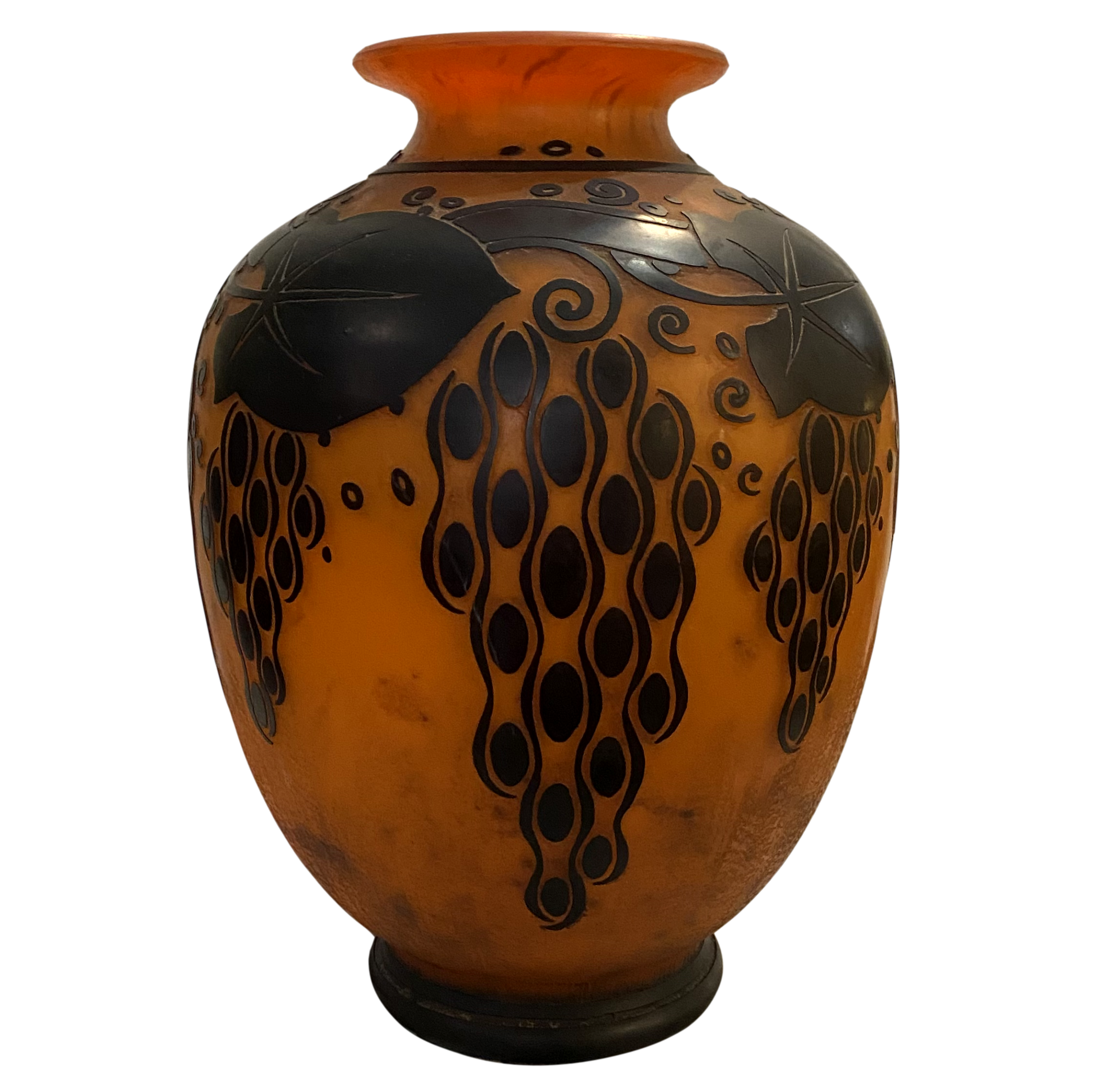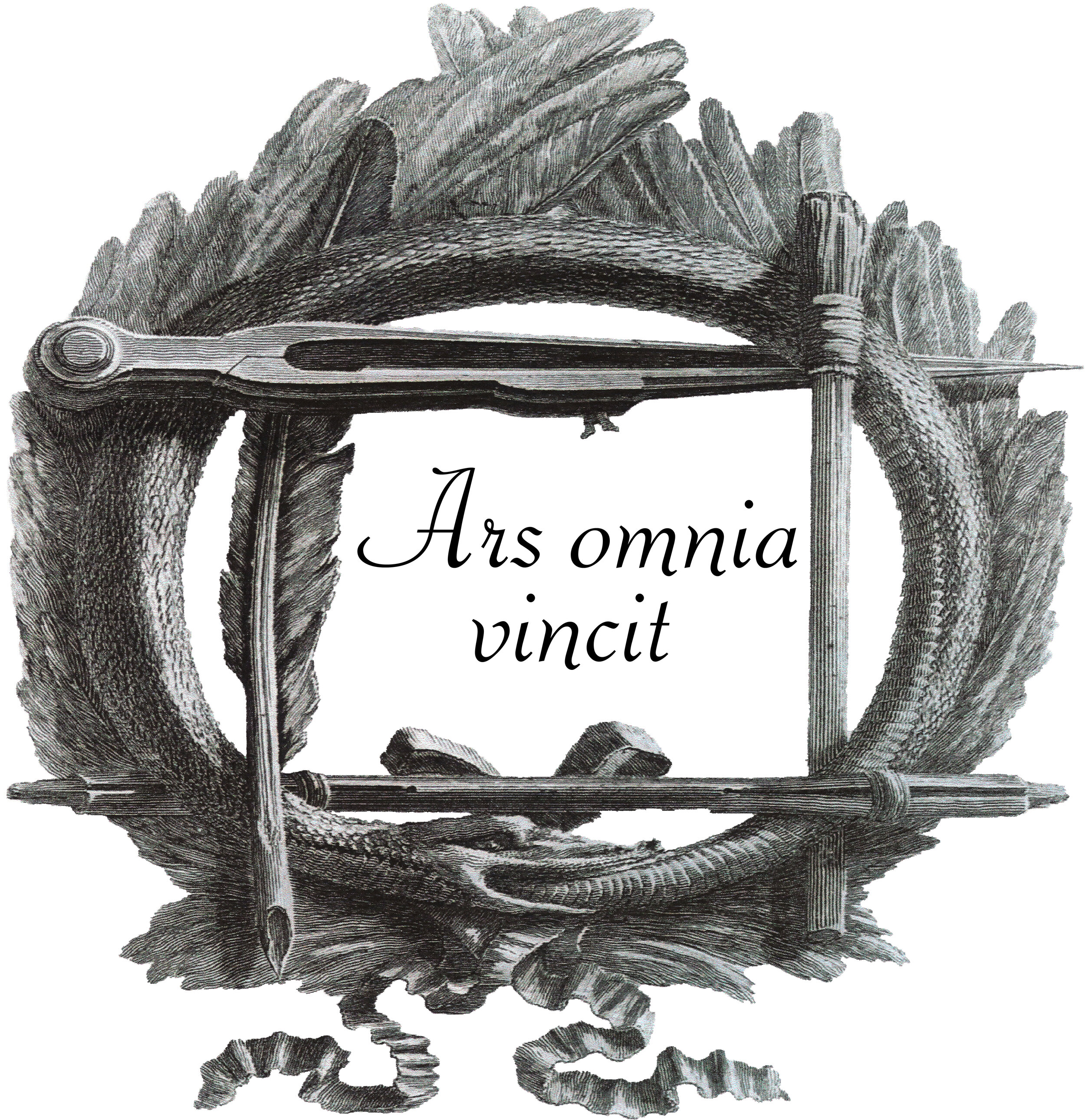Daum Art Deco' Vase


Daum Art Deco' Vase
A large glass vase in two colors layers orange and black with ‘pompeian decoration” with grapes.
Signed Daum 1925 Nancy, France.
Dimension cm 40
Excellent condition commensurate with age
Nancy and Lorraine The city of Nancy, which had a solid tradition of refinement since the court of Stanisław Bogusław Leszczyński, father-in-law of the French king Louis XV, undoubtedly played a primary role in the decorative arts in France, between the end of the 19th and the early 20th century. The "School of Beaux-Arts", born in 1702 as an Academy of Painting, became in 1827 "School of Drawing", incorporating ceramics, decorative painting, wood carving and even embroidery. At the end of the nineteenth century Nancy already exceeded 100,000 inhabitants, due to the fact that (being a frontier city), at the end of the Franco-Prussian war many exiles found refuge there. These gave rise to the most diverse activities, increased every form of trade and crafts and quickly made it become a prosperous and rich center. La Verrerie de Nancy At the beginning of 1870, Guillaume Avril, owner of the "Verreries des 3 Fontaines", and Josué-Victor Bertrand, partner in the "Sars Poteries" in north-eastern France, formed a company with the brothers Eugenio and Auguste Villaume to open a new glassware. The factory, located in a suburb of Nancy, on land belonging to the Villaume brothers (who retired from the company before the building was finished), took the name of "Verrerie Sainte-Catherine" and inaugurated in August 1875. Soon, following large initial investments and little work, new private loans were needed and Jean Daum intervened on several occasions with guaranteed loans. Given the growing economic difficulties and the inability to pay creditors, the glassware was put up for sale, and bought by Jean Daum, in the hope of recovering some of his money. Jean Daum, up to that point, had no experience of running a company of that type; he hired a former manager of "Sars Poteries" to whom he entrusted the technical aspect of the company, while he personally took care of the administrative part. The "Verrerie Sainte-Catherine" took the name of Verrerie de Nancy, and towards the end of 1879 his son Auguste (1853-1909), who had obtained a degree in law in Paris, gave up his career to come to the aid of the father in the manufactory. Auguste quickly managed to consolidate the management of the company and to implement a development program, which was facilitated by the marriage achieved in 1883 with Jeanne Constantin, daughter of the founder of the Gas Nancy factory, and by her conspicuous dowry. Jean Daum, in 1891, decided to create an "art department", whose artistic direction was entrusted to his younger son Antonin (1864-1930), who graduated in engineering and joined the company in 1887, a great lover of literature, music and the arts. Brother Auguste will continue to take care of administration and marketing. The classic production, consisting of glasses for watches and thick glasses for restaurants, is accompanied by a production of elegant table glasses and the first major technical innovations are made that will increase the company's development. In addition to the engraving on the wheel and the diamond point, enamel and gold decoration are introduced (since 1891) and the acid processing on multi-layer colored glass (since 1893), a technique already in use for some time at the manufacture by Emile Gallè. Antonin's great inventive capacity, supported by valid collaborators, leads to the successes obtained at the Universal Exposition in Chicago in 1893 and in Brussels in 1897, up to the Grand Prix obtained in 1900 at the Universal Expo in Paris, starting to enjoy, almost equally of Gallé, of great world fame. When on 11 February 1901, Emile Gallè established the Ecole de Nancy with the aim of connecting the various production and sales centers of the French artistic industries with museums and schools, and of organizing exhibitions, he wanted Antonin Daum to his side as vice president of the foundation, proof of the great consideration and esteem nurtured towards him. Since 1904, with Gallé's untimely death, the Daum manufactory no longer has competitors, hosting various artists and decorators of exceptional quality, their artistic glass creations are in demand all over the world, obtaining continuous recognition everywhere. The Daum production, in its continuous search for new solutions and increasingly complex and refined processes, has used all the possible techniques, often combining them together, to obtain specimens of rare preciousness, with delicate shades. Multilayer glass: Multilayer glass, hot worked, is obtained by successive overlapping of layers of glass of different colors. There are usually two or three overlapping layers, rarely four or five. The processing is quite delicate and complex, and requires that the different layers have the same expansion and elasticity coefficients, in order to avoid the frequent breakages during the cooling phase. Wheel engraving, "beaten" or "hammered": This technique has been known and used since ancient times in the engraving of cameo and precious stones. The wheels used for processing can be made of iron, copper, lead, wood or cork, and each of them leads to different aesthetic results. The glass object, wet with liquids containing fats and abrasive substances, is engraved with one of these wheels in motion, which allows to eliminate the excess material and refine the contours of the decoration. The effects of the wheel on the glass surface can also create a set of numerous small facets that recall the "beaten" or "hammered" effect, with exquisite plays of light. Acid etching: In this type of processing, the glass surface is subjected to the action of hydrofluoric acid, in order to obtain more or less deep engravings. This technique, already known in the eighteenth century, and widely used in artistic production by Emile Gallé, soon became, for the Daum glassworks, among the most used. After covering the surface of the vase or object with a layer of oily paste (the so-called "Judean bitumen"), it is drawn with a pointed metal tool, until it reaches the glass itself. The specimen is then treated with swabs soaked in hydrofluoric acid, or completely immersed in it, for the time necessary to attack the unprotected surface, modulating the depth of corrosion of the glass. This treatment, in the presence of glass layers of different colors, brings the same to the surface, creating interesting decorative and chromatic effects. Glass powders: The technique consists in applying on the glass surface, while still hot, some powders obtained from pulverized glass, which can be of various colors. These powders are carefully spread on a marble shelf, following any designs and arranging their chromatism. The jar, still hot, is rolled on the layer of powders that stick to the surface, obtaining the desired effect, then, with a second firing, the fusion of the powders and perfect cohesion with the object are obtained. The colored powders can also be applied to the surface of the vase or interposed between any layers of it. This technique represents one of the most original and peculiar procedures of the Daum glassworks. "Intercalary" decoration: This type of processing, studied since 1891 and patented by Daum in 1899, consists in applying an additional layer of glass (more or less transparent) to the vase, already worked with acid or the wheel. makes the lines more moved and the tones suffused, obtaining pictorial effects and perspective. Following the transition from cold to hot working, the execution encounters considerable difficulties and the risks of breakage are frequent. At the 1900 Universal Exposition, Daum presented 38 pieces made with this technique, achieving great success. Enamel decoration: This technique, used since ancient times, widely used by the Arabs and Venetians, consists in painting the glass object with enamel colors, which is then tempered in order to fix the process. Applications: These are decorations in relief, of various shapes, applied when the glass is still hot, sometimes set by pressure, other times simply placed on the surface, to which they adhere, consolidating with cooling. They can subsequently be worked in various ways: enamel, acid etched or wheel engraved. Pâte de verre: The process of pâte-de-verre consists in putting cold glass, often colored, crushed or ground into granules or powder, in refractory molds to be brought to melting at approximately 800-1000 ° C. The surface of the mold can be dusted with colored sand or mineral powders, thus giving additional color to the surface of the object. The mold was often made of plaster or plaster mixes, while the model could be made of wax, wood or metal; after taking a cast of the model, it was removed from the mold. Much used was the "cire perdue" or "lost wax" method, steamed or burned in an oven. The oven, heated to a high temperature, melted the glass that filled the mold. The object obtained was then removed and placed in an annealing oven to cool slowly (even two-three days), in order to prevent it from cracking or forming surface cracks. It was then cleaned and brushed with a dilute solution of hydrofluoric acid, finished and possibly polished.







